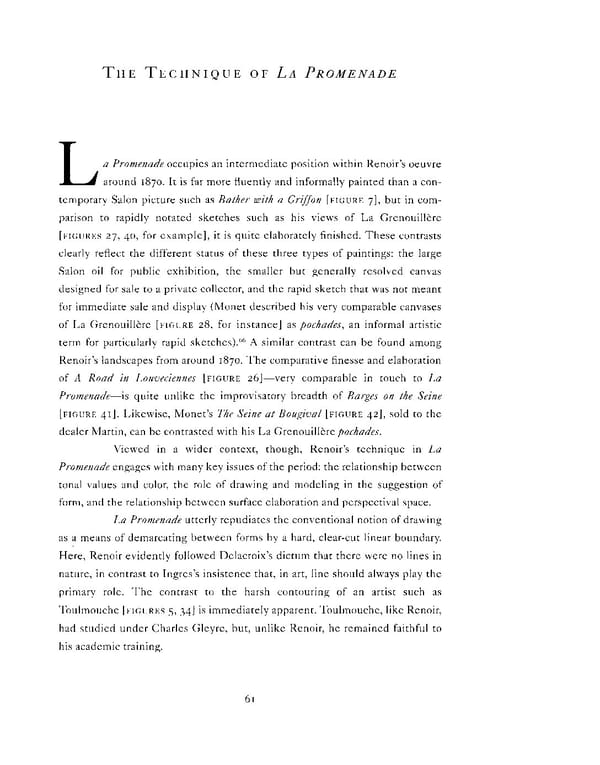THE TECHNIQUE OF LA PROMENADE La Promenade occupies an intermediate position within Renoir's oeuvre around 1870. It is far more fluently and informally painted than a con- temporary Salon picture such as Bather with a Griffon [FIGURE 7], but in com- parison to rapidly notated sketches such as his views of La Grenouillere [FIGURES 27, 40, for example], it is quite elaborately finished. These contrasts clearly reflect the different status of these three types of paintings: the large Salon oil for public exhibition, the smaller but generally resolved canvas designed for sale to a private collector, and the rapid sketch that was not meant for immediate sale and display (Monet described his very comparable canvases of La Grenouillere [FIGURE 28, for instance] as pochades, an informal artistic term for particularly rapid sketches).66 A similar contrast can be found among Renoir's landscapes from around 1870. The comparative finesse and elaboration of A Road in Louveciennes [FIGURE 26]—very comparable in touch to La Promenade—is quite unlike the improvisatory breadth of Barges on the Seine [FIGURE 41]. Likewise, Monet's The Seine at Bougival [FIGURE 42], sold to the dealer Martin, can be contrasted with his La Grenouillere pochades. Viewed in a wider context, though, Renoir's technique in La Promenade engages with many key issues of the period: the relationship between tonal values and color, the role of drawing and modeling in the suggestion of form, and the relationship between surface elaboration and perspectival space. La Promenade utterly repudiates the conventional notion of drawing as a means of demarcating between forms by a hard, clear-cut linear boundary. Here, Renoir evidently followed Delacroix's dictum that there were no lines in nature, in contrast to Ingres's insistence that, in art, line should always play the primary role. The contrast to the harsh contouring of an artist such as Toulmouche [FIGURES 5, 34] is immediately apparent. Toulmouche, like Renoir, had studied under Charles Gleyre, but, unlike Renoir, he remained faithful to his academic training. 61
 Pierre-Auguste Renoir: La Promenade Page 68 Page 70
Pierre-Auguste Renoir: La Promenade Page 68 Page 70